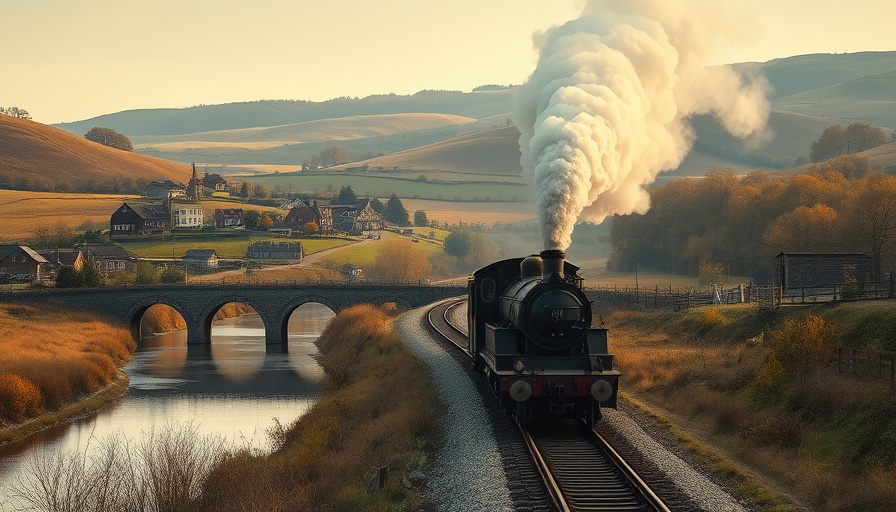
Rediscovering Brockweir: A Window into the Past
In 1940, as the world faced the horrors of World War II, an unexpected serenity thrived along the River Wye. Amid the chaos of wartime London and other industrial cities, the village of Brockweir, painted by Norman J. Williams, represents a stark contrast, encapsulating peace in the midst of fear. This recently uncovered artwork provides a glimpse of life during turbulent times, showcasing rolling hills and a gentle river that, despite the war, continued to flow untroubled.
The Essence of Isolation
The painting captures Brockweir's idyllic charm, a community seemingly untouched by the chaos of the surrounding world. The serene landscape includes not only the picturesque village but also the scenic hills of Tidenham Chase and the calming waters of the River Wye. The presence of a steaming train adds a touch of nostalgia, hinting at a simpler time, when life thrived at a different pace. This artistic representation transports viewers back to an era where community bonds were essential to navigating daily life.
Art as Historical Insight
The significance of this painting goes beyond its aesthetic pleasure—it serves as a historical marker, preserving a moment when joy and tranquility were in stark juxtaposition to the broader experiences of war. The painting is a reminder of how art can capture the spirit of a place and time, allowing present generations to reflect on their history and cultural heritage.
Why It Matters Today
Rediscovering Norman J. Williams' painting is not just an exercise in nostalgia; it emphasizes the importance of community in historical narratives. For local business and community groups, understanding this history can foster a deeper connection to their heritage. Artworks like these remind us of what has shaped our present and can inspire future generations to appreciate and preserve their own narratives.
Engaging with Our History
As communities come together, pieces of history like this painting emphasize the rich tapestry woven through stories of resilience and beauty. By sharing and discussing local art, community groups can help generate a stronger sense of identity and belonging, prompting individuals to get involved in local heritage efforts.
Ultimately, connecting with our history, through art or literature, enriches the current landscape of our local communities. It's a call for each of us to engage with our past, understand its implications on our present, and inspire future community connectivity.
 Add Row
Add Row  Add
Add 




Write A Comment